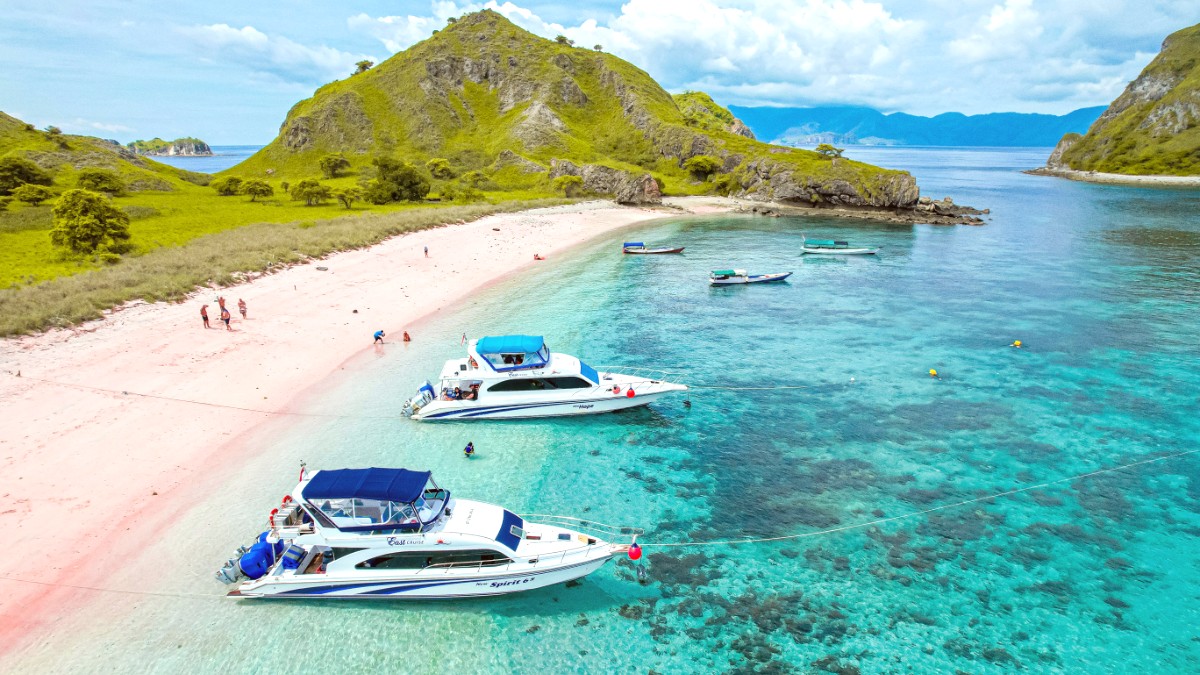
Komodo, Indonesia
This remarkable destination is not just about its color; it presents underwater life and panoramic hill views. It is a natural wonder inviting exploration above and below the surface.
Pink Beach is situated on Komodo Island, part of the larger Komodo National Park in East Nusa Tenggara, Indonesia. Access typically occurs by boat from Labuan Bajo, the main hub on Flores Island.
The beach forms a part of this protected area, recognized globally for its unique wildlife, including the Komodo dragon, and its pristine marine ecosystems.
Komodo National Park carries an UNESCO World Heritage site designation and a Biosphere Reserve status. It safeguards the Komodo dragon and its habitat, alongside diverse marine and terrestrial species. The park's mission extends to conservation and maintaining ecological balance.
The park showcases a variety of ecosystems, from dry savanna to lush forests and coral reefs. This mix supports a rich array of flora and fauna, making it a hotspot for biological diversity. Marine areas here are especially diverse, with thousands of fish species and numerous coral types.
The largest lizard on Earth, native only to a few islands here.
Common sightings at dedicated dive sites within the park.
Green sea turtles and hawksbill turtles frequent the waters.
Often seen playing in the currents around the islands.
Visitors help maintain the park's natural state by following park rules. These include staying on marked trails, refraining from feeding animals, and taking all trash with you. Guides accompany all visits to Komodo Dragon habitats.
Entry to Komodo National Park involves fees. These often cover conservation efforts, ranger services, and general park access. Fees vary based on nationality and activities planned, like trekking or snorkeling.
The dry season, from April to December, offers the best conditions for visiting Pink Beach and Komodo National Park. During these months, the weather typically brings sunny skies and calm seas, ideal for boat trips and water activities.
Preserving the unique environment of Komodo National Park is a shared responsibility. Your adherence to guidelines aids in its long-term protection.
Pink Beach captivates visitors with its unique sands and underwater world. Activities here typically involve enjoying the natural beauty, both on shore and beneath the waves.
The calm, clear waters make it an inviting spot for various leisure activities, whether you seek adventure or relaxation.
Explore the shallow coral gardens abundant with colorful fish and marine life. The visibility here is often exceptional.
Enjoy the gentle waves and refresh yourself in the warm, clear waters. The calm conditions are ideal for a leisurely swim.
Capture the distinct pink sands, turquoise waters, and lush green hills. Sunrises and sunsets offer especially stunning photo scenes.
Beyond swimming and snorkeling, a short hike to nearby viewpoints on Komodo Island can be undertaken for panoramic views of Pink Beach and the surrounding archipelago. Always accompanied by a park ranger.
Measures are in place to preserve the delicate coral ecosystems that contribute to the beach's unique color and support marine life.
Visitor quotas and guided tours help manage the environmental footprint, ensuring long-term ecological health.
Active patrols and community engagement combat illegal fishing and wildlife trade within the park boundaries.
Local rangers, many from nearby villages, serve as guardians of the park's wildlife and natural assets.
Tourism generates income for local communities through guide services, boat rentals, and handicraft sales.
Programs educate local populations on sustainable practices and the value of conservation.